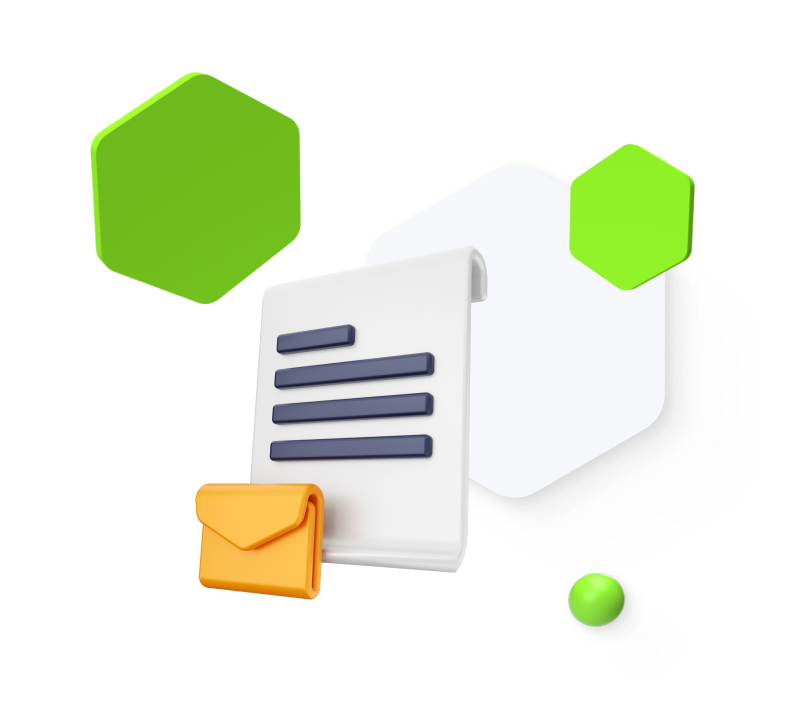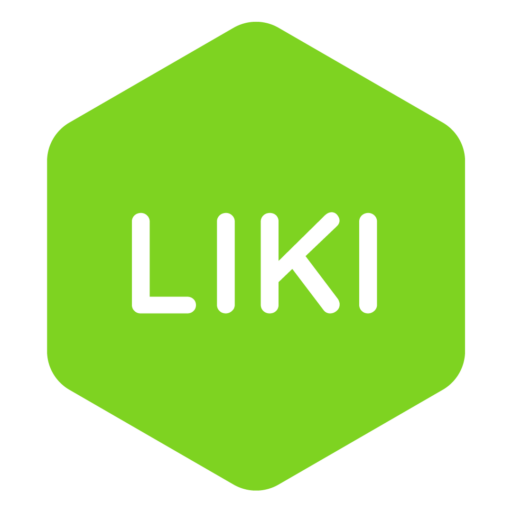Technologies
Go Development - backend solutions


What is Go development?
Go, also known as Golang, is a programming language developed by Google. It was designed to address common issues that developers face with other programming languages, such as C++ and Java, including slow compilation times and complex syntax. Go is a statically typed language, which means that the types of variables are defined at compile time rather than runtime.
Go language has become popular for developing backend systems, web applications, and network programming.
What else?
It is known for its simplicity, readability, and efficiency, with built-in features for concurrency and garbage collection. Go also has a growing ecosystem of libraries and tools, making it a flexible language for a variety of development needs.
Go development involves using the Go programming language to build software applications. Developers use Go to write code, create functions, and use the language’s built-in libraries and tools to create efficient and reliable software. Go development can include building web servers, command-line tools, network programming, and other applications. Go can be used for both small-scale and large-scale projects and is used by companies such as Google, Dropbox, and Uber.

Short history of Go development
Go development began in 2007 when Robert Griesemer, Rob Pike, and Ken Thompson of Google started work on a new programming language. They aimed to create a language that combined the simplicity and productivity of dynamic languages like Python with the performance and safety of compiled languages like C++. They also wanted to create a language that was well-suited for modern computing environments, such as multicore processors and distributed systems.
The first public release of Go was in November 2009, and it quickly gained popularity among developers for its simplicity, efficiency, and built-in concurrency features. In 2012, Go 1.0 was released, marking the language’s first stable release.
Since then, Go has continued to grow in popularity and has been adopted by companies such as Google, Dropbox, Uber, and many others. In 2016, Go was ranked the ninth most popular programming language in the TIOBE Index, and it has continued to rank highly in various language popularity indexes.
The Go development community has also grown over the years, with numerous libraries, frameworks, and tools being developed to support Go development. Today, Go is widely used for building backend systems, web applications, network programming, and cloud services, among other things.
Where is Go development used for?
Go development is used for a variety of applications and projects, including:
- Backend systems. Go is a popular choice for building backend systems for web applications, APIs, and other distributed systems. Its built-in concurrency features and efficient memory management make it well-suited for handling high volumes of requests.
- Networking. Go’s networking libraries and support for concurrency make it a good choice for building network applications and tools, such as load balancers, proxies, and network scanners.
- Command-line tools. Go’s support for cross-compilation and static linking makes it easy to build command-line tools that can be run on multiple platforms.
- DevOps tools. Go is used to build a variety of DevOps tools, such as Docker, Kubernetes, and Terraform.
- Cloud services. Go’s efficient memory management and concurrency features make it well-suited for building cloud services and microservices.
- Data science and machine learning. Go is increasingly being used in data science and machine learning projects due to its efficient performance and support for parallel processing.
Overall, Go is a versatile language that can be used in a variety of development contexts, from small-scale projects to large-scale distributed systems.
Why choose Go development?
01
Simplicity
02
Efficiency
03
Scalability
04
Safety
05
Open source
06
Cross-platform
There are several reasons why someone might choose Go development:
Simplicity. Go was designed to be a simple language with a minimalistic syntax, making it easy to learn and use. Its simplicity also makes it easier to write, maintain, and debug code.
Efficiency. Go is a compiled language that produces binaries with high performance and low memory consumption. Its built-in concurrency features make it well-suited for handling high volumes of requests in distributed systems.
Scalability. Go’s native concurrency features and efficient memory management make it well-suited for building scalable systems that can handle large numbers of users or requests.
Safety. Go includes built-in safety features such as garbage collection, array bounds checking, and strong typing that help prevent common programming errors and improve the reliability of the code.
Open source. Go is an open-source language, which means that anyone can use it and contribute to its development. This has led to a vibrant community of developers, libraries, and tools around the language.
Cross-platform. Go can be compiled to run on multiple platforms, including Linux, macOS, Windows, and more. This makes it easy to write and distribute code that can run on a wide range of systems.
As you can see, Go is a versatile language that offers simplicity, efficiency, scalability, safety, and cross-platform support, making it a great choice for a variety of development needs.
Go development process
The Go development process typically follows these steps:
- Installation. The first step in Go development is to install the Go programming language on your machine. You can download the Go compiler from the official website and follow the installation instructions.
- Setting up the environment. After installing Go, you’ll need to set up your development environment. This includes setting the GOPATH environment variable, which specifies the directory where your Go source code and packages are stored.
- Creating a new project. To start a new Go project, you can create a new directory within your GOPATH and create a main.go file. This file will contain the entry point for your application.
- Writing code. Once you’ve set up your project, you can start writing code in Go. Go code is typically organized into packages, which are collections of related functions and types. You can create new packages using the “package” keyword in your code.
- Building and testing. After writing your code, you can build your Go program using the “go build” command. This will create an executable file that you can run. You can also test your code using the “go test” command, which runs any unit tests you’ve written.
- Debugging. If you encounter errors or bugs in your code, you can use Go’s built-in debugging tools, such as the “go run” command with the “-race” flag to detect race conditions, or the “go vet” command to find common errors.
- Deployment. Once your code is ready, you can deploy your Go application to a server or cloud platform. Go’s cross-platform support and efficient memory management make it well-suited for deployment in distributed systems.
Overall, the Go development process involves setting up your environment, writing code, building and testing, debugging, and deploying your application. Go’s simplicity, efficiency, and built-in tools make it a straightforward and flexible language for developing a variety of applications.

Interested in web services written in Go?
We will gladly fit the best solution for your needs.
What tools are needed in Go development?
There are several tools that are commonly used in Go development:
- Go compiler. The Go compiler is a tool that translates Go source code into executable binary files that can be run on different platforms.
- Integrated development environments (IDEs). IDEs such as Visual Studio Code, GoLand, or IntelliJ IDEA provide code editing, debugging, and testing features specifically designed for Go development.
- Text editors. Text editors such as Atom, Sublime Text, or Vim can also be used for Go development, often with the help of plugins and extensions.
- Go packages and libraries. Go has a large standard library that includes packages for common tasks such as file I/O, networking, and cryptography. There are also many third-party packages and libraries available on sites like GitHub that can be used to extend Go’s functionality.
- Go tools. The Go command-line tools, including go build, go test, go get, go vet, and go fmt, provide a range of useful functions for Go development, such as compiling, testing, formatting, and analyzing code.
- Version control systems (VCS). VCS such as Git or Mercurial are essential for managing code changes, collaborating with other developers, and deploying code changes to production environments.
- Continuous integration and deployment (CI/CD) tools. CI/CD tools such as Jenkins, Travis CI, or CircleCI can be used to automate the build, test, and deployment process for Go applications.
Overall, these tools are important for Go development and can help streamline the development process, improve code quality, and enhance the efficiency and reliability of Go applications.
Go development services
Go development services can provide a range of benefits to businesses and organizations, including access to expert developers, increased development speed, improved code quality, and the ability to develop high-performance and scalable applications. These services can include:
- Custom software development. Go development companies can provide custom software development services, creating custom applications tailored to specific business needs.
- Web application development. Go is a popular choice for web development, and Go development companies can provide web app development services for a range of industries and use cases.
- Cloud application development. Go is well-suited for cloud development, and Go development companies can provide services to develop cloud native applications that can be deployed on cloud platforms like AWS, Google Cloud, or Azure.
- DevOps services. Go development companies can provide DevOps services to help clients automate the development and deployment of Go applications, including testing, deployment, and continuous integration and deployment (CI/CD).
- Consulting and training. Go development companies can provide consulting and training services to help clients evaluate the suitability of Go for their specific needs, as well as training services to help developers learn how to develop applications in Go.
- Maintenance and support. Go development companies can provide ongoing maintenance and support services to ensure that applications remain up-to-date and fully functional over time.
Examples of Go projects
There are many notable examples of projects developed using Go. Here are a few examples:
- Docker. Docker is a popular containerization platform that enables developers to package and deploy applications in a portable and scalable way. Docker’s backend is written in Go.
- Kubernetes. Kubernetes is a container orchestration platform that enables developers to manage and deploy containerized applications. Kubernetes is also written in Go.
- InfluxDB. InfluxDB is a popular time-series database that is designed for storing and analyzing large volumes of time-stamped data. InfluxDB is written in Go.
- CockroachDB. CockroachDB is a distributed SQL database that is designed for scalable, fault-tolerant, and consistent database operations. CockroachDB is written in Go.
- Ethereum. Ethereum is a blockchain platform that enables developers to build decentralized applications (dApps). The Ethereum client is written in Go.
- Prometheus. Prometheus is an open-source monitoring system that is used to collect and analyze metrics from a variety of sources. Prometheus is written in Go.
- Hugo. Hugo is a popular static site generator that is used to build static websites quickly and easily. Hugo is written in Go.
Overall, these projects demonstrate the versatility and power of Go for developing a variety of applications, from containerization and cloud platforms to databases and monitoring systems.

Przemek
COO

Kasia
Digital Value Manager

Piotr
Business Representative

